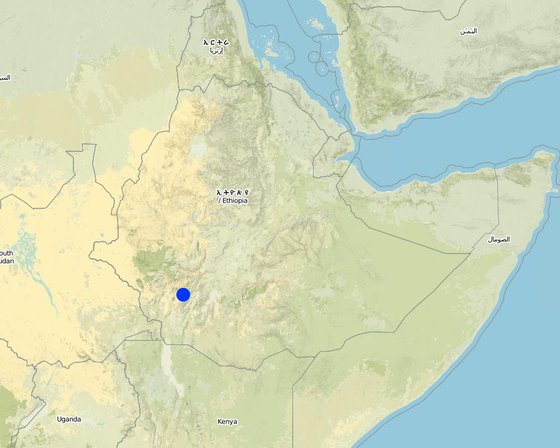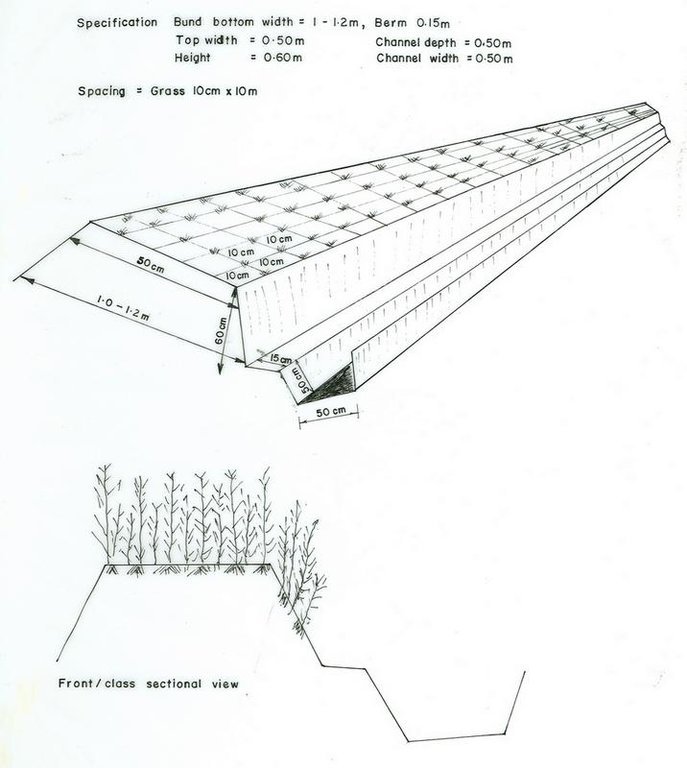

Desho grass is established by planting tillered cuttings. It establishes easily with little soil moisture. It is a perennial herbaceous grass which has massive fibrous root system that anchors the plant to the bind. It provides better cover to the bund and establishes agressively. The growth is upright with a growth potential of 90-120 cm depending on the fertility of the soil and regenerates quickly. It can grow and mature (ready for harvesting) at least once in a month and it requires only one seasontime rain to cover the whole bund.
Purpose of the Technology: The purpose of Desho grass is to stablize the bund and provide palatable grass for livestock.
Establishment / maintenance activities and inputs: Desho grass can be established/regenerate by tiller splitting and planting. The soil should be moist during establishment of Desho grass.
Natural / human environment: Desho grass can grow at 1500-2800 m asl and its best performs at an altitude of 1700-2800m asl.

地点: Sorro/Lintala, Ajacho, SNNPR, 埃塞俄比亚
分析的技术场所数量:
技术传播: 均匀地分布在一个区域 (approx. 10-100 平方千米)
在永久保护区?:
实施日期: 不到10年前(最近)
介绍类型





| 对投入进行具体说明 | 单位 | 数量 | 单位成本 (Birr) | 每项投入的总成本 (Birr) | 土地使用者承担的成本% |
| 劳动力 | |||||
| Labour | ha | 1.0 | 8.0 | 8.0 | 100.0 |
| 设备 | |||||
| Machine use | ha | 1.0 | 1.21 | 1.21 | |
| Tools | ha | 1.0 | 1.7 | 1.7 | |
| 植物材料 | |||||
| Seedlings | ha | 1.0 | 3.2 | 3.2 | |
| 技术建立所需总成本 | 14.11 | ||||
| 技术建立总成本,美元 | 1.64 | ||||
land productivity is improved
desho grass became ample forage resources
desho grass became ample forage resources
from sells of Desho grass and animal product
strengthen group working, e.g. community development committee (CDC)
Introduce strong approach, Integrated Watershed Management
use of Desho grass for bund stablization
excess water is retained behind the bund and infiltrate
Desho grass cover the bund
SLM之前的数量: 70
SLM之后的数量: 4
bund stablized with Desho grass is effctive in conserving the soil
reduce flooding